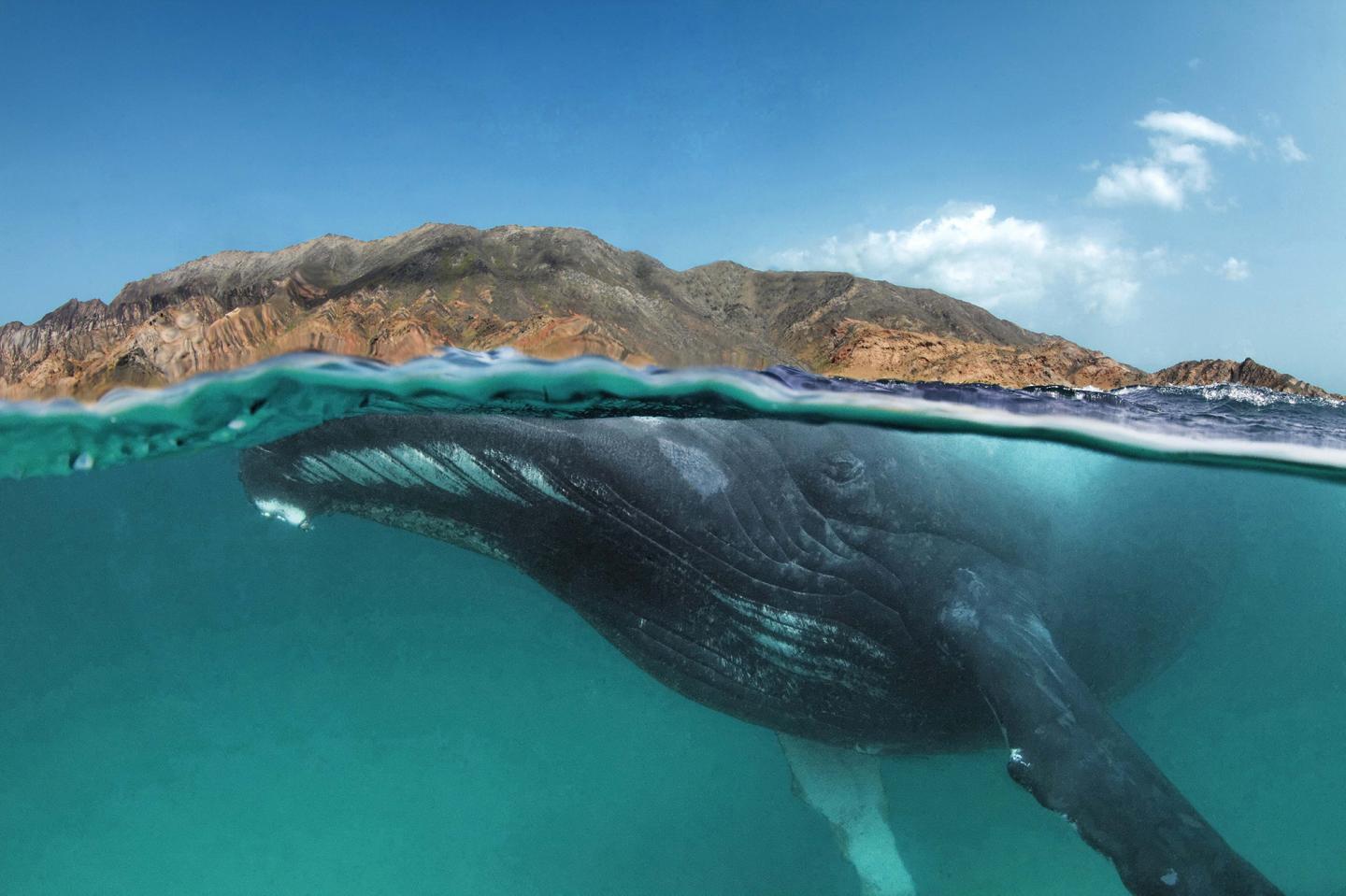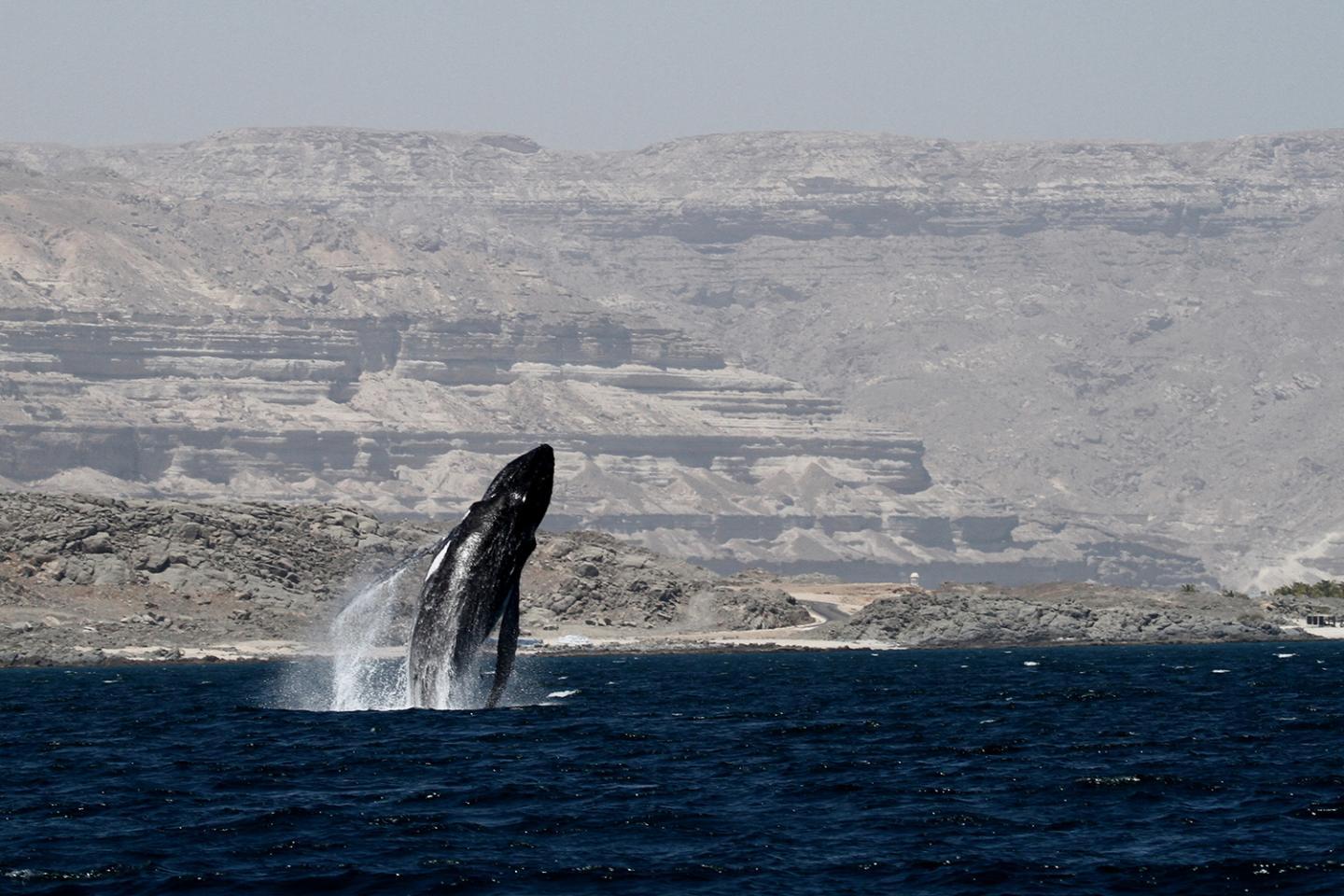Scientists from WCS (Wildlife Conservation Society), the American Museum of Natural History (AMNH), the Environment Society of Oman, and other organizations have made a fascinating discovery in the northern Indian Ocean: humpback whales inhabiting the Arabian Sea are the most genetically distinct humpback whales in the world and may be the most isolated whale population on earth. The results suggest they have remained separate from other humpback whale populations for perhaps 70,000 years, extremely unusual in a species famed for long distance migrations.
The study appears in the online journal PLOS ONE. The authors include: Cristina Pomilla of the the Sackler Institute for Comparative Genomics at the American Museum of Natural History; Ana R. Amaral of the Universidade de Lisboa; Tim Collins of WCS; Gianna Minton of WWF-Gabon; Ken Findlay of the University of Pretoria; Matthew Leslie of AMNH and WCS; Louisa Ponnampalam of the University of Malaysia; Robert Baldwin of the Environment Society of Oman; and Howard Rosenbaum, Director of the Ocean Giants Program at WCS.
To access the paper, click here: http://dx.plos.org/10.1371/journal.pone.0114162
Known for its haunting songs and acrobatics, the humpback whale holds the record for the world's longest mammal migration; individuals have been tracked over a distance of more than 9,000 kilometers between polar feeding areas and tropical breeding areas.
"The epic seasonal migrations of humpbacks elsewhere are well known, so this small, non-migratory population presents a wonderful and intriguing enigma," said WCS researcher and study co-author Tim Collins. "They also beg many questions: how and why did the population originate, how does it persist, and how do their behaviors differ from other humpback whales?"
Previous studies on humpback whales, including several published by WCS, have revealed a great deal of population structure among humpback whales of the Northern Hemisphere and many areas of the Southern Hemisphere, particularly on breeding grounds. At the ocean basin scale, scientists are gaining an understanding of humpback whale gene flow, including in the Southern Indian Ocean. The dynamics and movements of animals in the Arabian Sea, however, are poorly understood.
"We have invested lots of energy working to clarify the population structure of several large whale species around the world," said Dr. Howard Rosenbaum, Director of WCS's Ocean Giants Program and senior author on the study. "The levels of genetic differences for Arabian Sea humpback whales are particularly striking; they are the world's most distinct population of humpback whales and might even shed some light on the environmental factors that shape cetacean populations."
To assess the origins of the Arabian Sea humpback whale population, the research team examined nuclear and mitochondrial DNA extracted from tissue samples that were collected as biopsies from 47 individual whales. The data were then compared to existing data sets from humpback whales in both the Southern Hemisphere and the North Pacific. All of the sampling was conducted in the Sultanate of Oman, a known hotspot for the animals. "We couldn't have conducted this study without the magnificent support of the Sultanate of Oman, and particularly our partnership with the Environment Society of Oman," said Collins
The authors have speculated that the 70,000-year separation might be linked to various glacial episodes in the late Pleistocene Epoch and associated shifts in the strength of the Indian Monsoon. The separation is likely reinforced by breeding cycles that are asynchronous; humpback whales in the Arabian Sea breed on a Northern Hemisphere schedule, whereas the closest whale populations in the Western Indian Ocean (below the equator) breed during a different season. The population's known range includes Yemen, Oman, the UAE, Iran, Pakistan and India, and possibly the Maldives and Sri Lanka.
Other lines of evidence support the genetic data, including an absence of photo-identified individuals from the Arabian Sea appearing with whales in theWestern Indian Ocean (and vice versa). Arabian humpbacks also have far fewer barnacle scars than Southern Hemisphere whales, and a total absence of cookie-cutter shark bites (such bites are common on humpbacks found south of the equator). Future work will explore the possible causal mechanisms for the population's isolation.
The genetic study also revealed a comparatively low level of genetic diversity when compared to other humpback populations, as well as the signatures of both distant and recent genetic bottlenecks, events caused by population declines. The most recent bottleneck may be due to illegal whaling; during two very short periods in 1965 and 1966 Soviet whalers killed 242 humpback whales in the Arabian Sea (39 of the captured females were also pregnant), a potentially devastating loss for a small population. Today, the major and most urgent concern for this population is lethal entanglement in fishing gear and ship strikes. "This latest study strengthens the evidence that we have an urgent conservation priority to attend to, not just in Oman, but with partners across range states," said HH Sayyida Tania Al Said of the Environment Society of Oman. "We are working with stakeholders in Oman to advocate for the importance of conservation of this species and its consideration in development plans. We are also seeking to work with international partners to improve conservation of marine mammals in the wider Arabian Sea, including participation in a regional humpback whale conservation initiative."

A whale named 'Spitfire' swims in the waters off the island of Hallaniyah in southern Oman. Scientists from WCS, AMNH, and the Environment Society of Oman have found that humpback whales inhabiting the Arabian Sea are the most genetically distinct humpback whales in the world and may be the most isolated whale population on earth.
(Photo Credit: Photo : © Tobias Friedrich)
"The Arabian Sea humpback whales are the world's most isolated population of this species and definitely the most endangered," added Rosenbaum. "The known and growing risks to this unique population include ship strikes and fishing net entanglement, threats that could be devastating for this diminished population; we need to see increased regional efforts to provide better protection for these whales."
The current best estimate of population size for Arabian Sea humpbacks is fewer than 100 individuals although this is based solely on the work conducted in Oman. The status of the population is reviewed annually by the Scientific Committee of the International Whaling Commission. The authors of the study recommend that the population be uplisted from "Endangered" to "Critically Endangered" on the IUCN's Red List of Threatened Species.

A whale breaches close to the Southern Omani town of Hasik -- an Arabian Sea hotspot favored by breeding whales. Arabian Sea humpback whales do not migrate (unusual for a highly migratory species) and have remained separate from other humpback whale populations for perhaps 70,000 years.
(Photo Credit: Photo : Darryl MacDonald)
Source: Wildlife Conservation Society